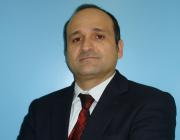Citation:
Korres D, Nikolaou VS, Kaseta M, Evangelopoulos D, Markatos K, Lazarettos J, Efstathopoulos N. Posterior stabilization of cervical spine injuries using the Roy-Camille plates: a long-term follow-up. Eur J Orthop Surg Traumatol. 2014;24 Suppl 1:S125-30.
Abstract:
AIM: Posterior cervical spine fixation has undergone tremendous advancement in recent years. The purpose of this study is to present our experience with the Roy-Camille instrumentation for posterior cervical stabilization after injury in a long-term follow-up.
PATIENTS AND METHODS: From 1985 to 1995, 76 patients with a lower cervical spine traumatic lesion were treated in a single institution by posterior plate stabilization using the Roy-Camille plates (R-C plates). Fifty-four men and 22 women with a mean age of 43.2 years were involved. In 59 patients the injuries were due to a road traffic accident, in 14 cases the fall from a high was responsible, while in two cases the injuries were due to sport activities. There were four bilateral dislocations, nine unilateral dislocations, 56 fracture dislocations, five fracture separations of a lateral mass and two burst fractures. Neurological lesions were present in 65 patients (9 ASIA A, 16 ASIA B, 22 ASIA C, 18 ASIA D and 11 ASIA E). All patients had minimum follow-up of 7 years. Fifty-nine patients were followed up for a mean period of 21 years (14-27 years).
RESULTS: Stability was obtained in all but two cases. Reoperation was done in two cases: in one for the correction of the lost reduction and in a second for the reinsertion of a screw irritating a nerve root. No case in the ASIA A group showed neurological improvement, a fact observed in the other groups.
CONCLUSIONS: The R-C plates were used in the last quarter of the last century. This technique showed good short-time results, and we have shown good results in a long-term follow-up as well. The literature referred to this technique was favorable, as far as the biomechanical behavior and also clinical application concern. The question about this plating system abundance still remains unanswered.
